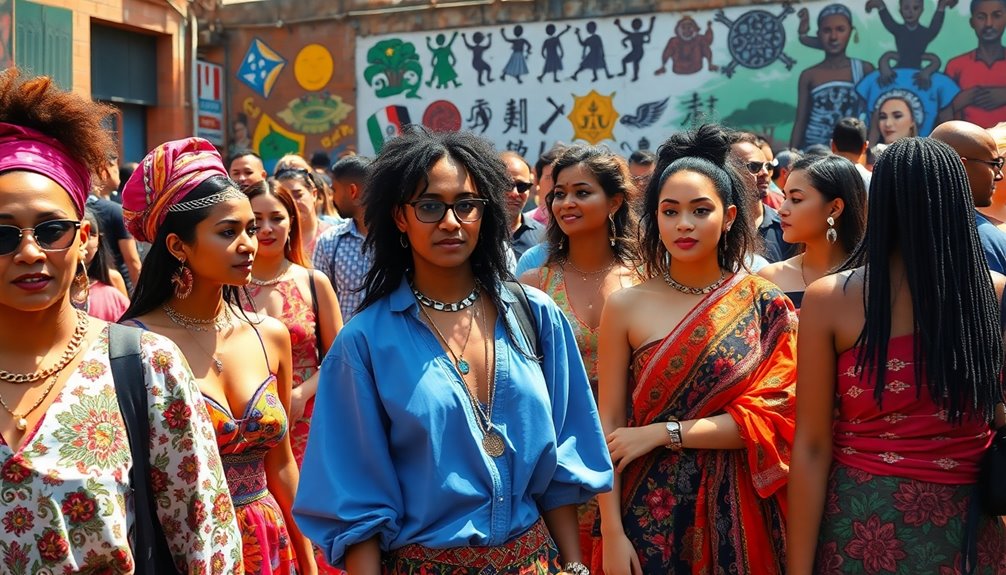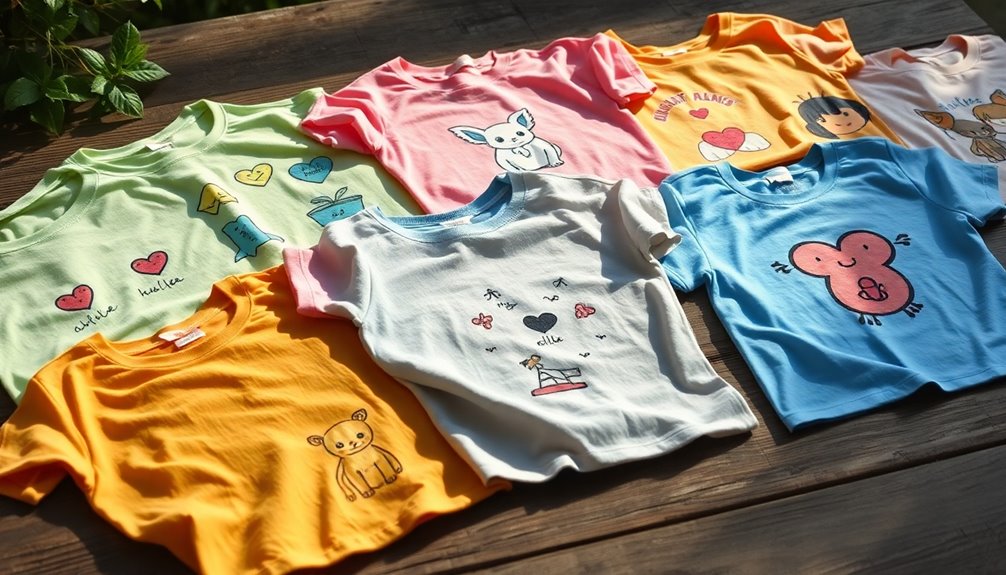Culture greatly influences the fashion industry in ways you might find surprising. Traditional garments like saris and kimonos celebrate cultural heritage, while movements like Black Lives Matter spark awareness about cultural appropriation. Designers often blend vibrant colors and intricate designs, reflecting regional traditions. Social media accelerates trends, enabling a global exchange of styles. As you navigate this intricate landscape, you might notice how identity and community beliefs shape fashion choices. Understanding these cultural narratives can enhance your fashion insights. Keep exploring, and you'll uncover even deeper connections between culture and the evolving world of fashion.
Cultural Context of Fashion
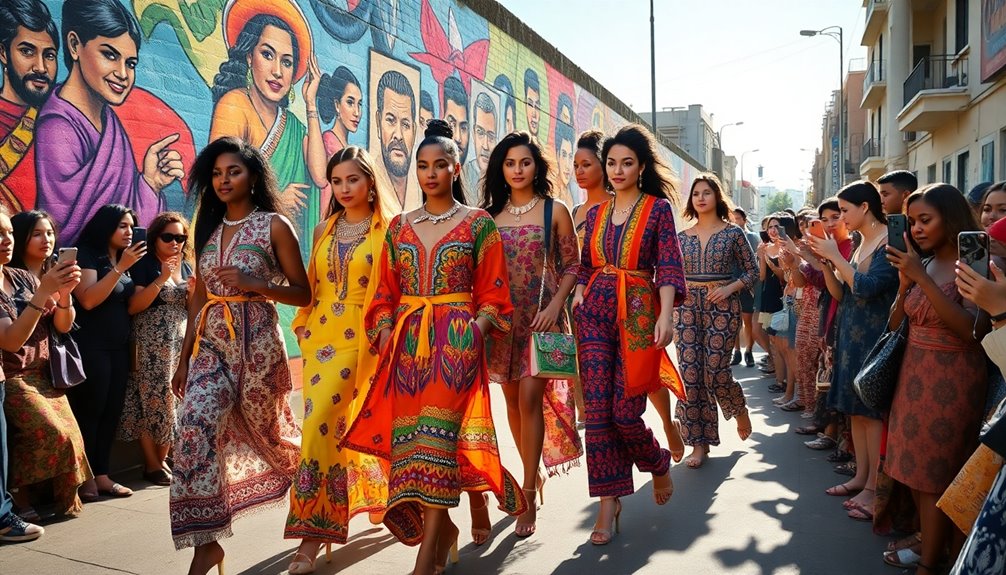
Fashion isn't just about trends; it's deeply rooted in cultural context. You can see this in how traditional clothing, like the Indian sari or Japanese kimono, reflects regional heritage and values.
Fashion designers often draw inspiration from these cultural influences, using vibrant colors and intricate designs that convey significant meanings. For instance, Kente cloth from Ghana symbolizes royal status, showcasing community beliefs.
Your consumer behavior is shaped by these cultural narratives as you seek garments that resonate with your identity. Additionally, sustainable fashion practices are increasingly incorporating local craftsmanship, like Chinese silk and African Ankara prints, to honor cultural traditions while promoting ethical consumption.
This fusion of culture and fashion enriches your wardrobe and deepens your connection to history and identity.
Traditional Attire and Significance
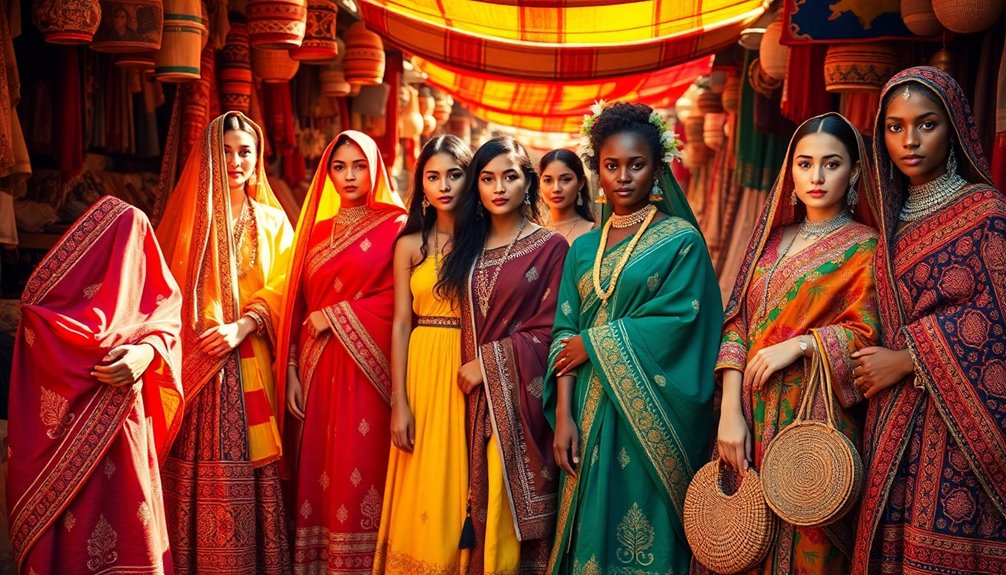
While exploring traditional attire, you'll quickly notice how these garments are more than just clothing; they embody cultural significance and history. They reflect community values and showcase the rich cultural diversity present in our world.
Here are some key aspects of traditional attire:
- Symbolism: Garments like the Indian sari and Kente cloth represent regional traditions and royal status.
- Cultural Heritage: Each piece carries historical significance, preserving identity and beliefs.
- Fashion Choices: Styles like kimonos and shalwar kameez vary in elegance and comfort, catering to different occasions.
- Community Values: Traditional attire often connects individuals to their roots and fosters a sense of belonging.
Understanding these elements enriches your appreciation for fashion's role in expressing cultural narratives.
Influence of Social Movements
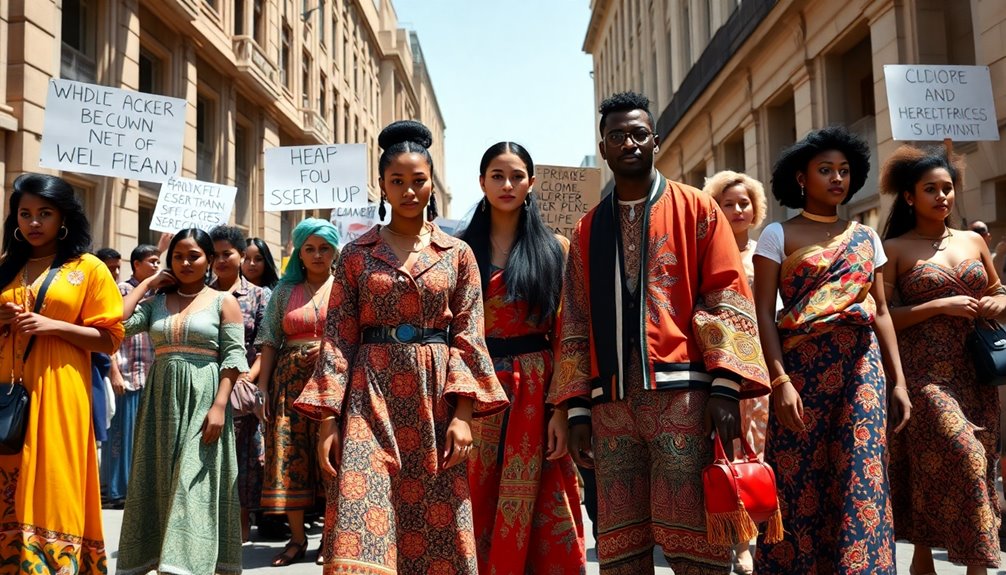
Garments serve as a canvas for expressing cultural identity, and social movements have played a pivotal role in shaping fashion throughout history.
From the Civil Rights Movement, where Afro hairstyles and dashikis symbolized empowerment, to the feminist movement's introduction of trousers for women, these movements challenge norms and influence fashion trends.
The LGBTQ+ rights movement celebrates gender-fluid styles, breaking traditional boundaries in the fashion industry.
Recently, the Black Lives Matter movement has raised awareness about cultural appropriation and the importance of supporting Black-owned brands, emphasizing ethical practices.
Additionally, social movements have driven a shift towards sustainable fashion, showcasing eco-conscious brands that align with the values of climate activism.
Moreover, the integration of affordable production setups has allowed emerging designers to create impactful collections that reflect these social values.
Together, these movements redefine culture and inspire change in fashion.
Cultural Appropriation in Fashion
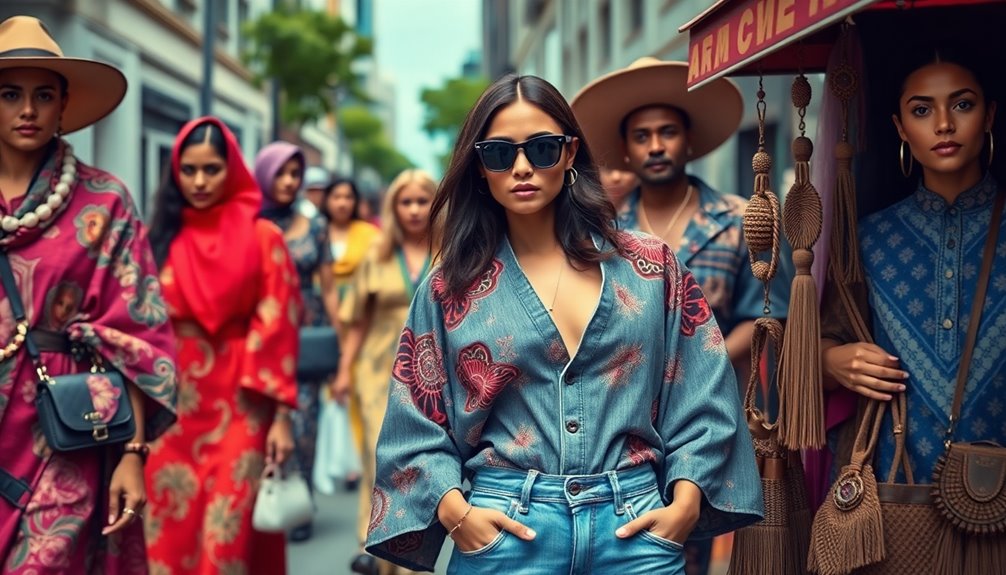
Cultural appropriation in fashion often arises when designers borrow elements from marginalized cultures without grasping their significance, leading to misrepresentation and offense.
This issue has become a hot topic in the fashion industry, influenced by social media's ability to amplify voices demanding accountability.
Here are some valuable insights to reflect on:
- Recognize the origins of cultural symbols.
- Understand the historical significance behind elements like the durag.
- Acknowledge backlash from consumers and activists.
- Adapt marketing strategies to promote sensitivity and respect.
Globalization and Fashion Trends
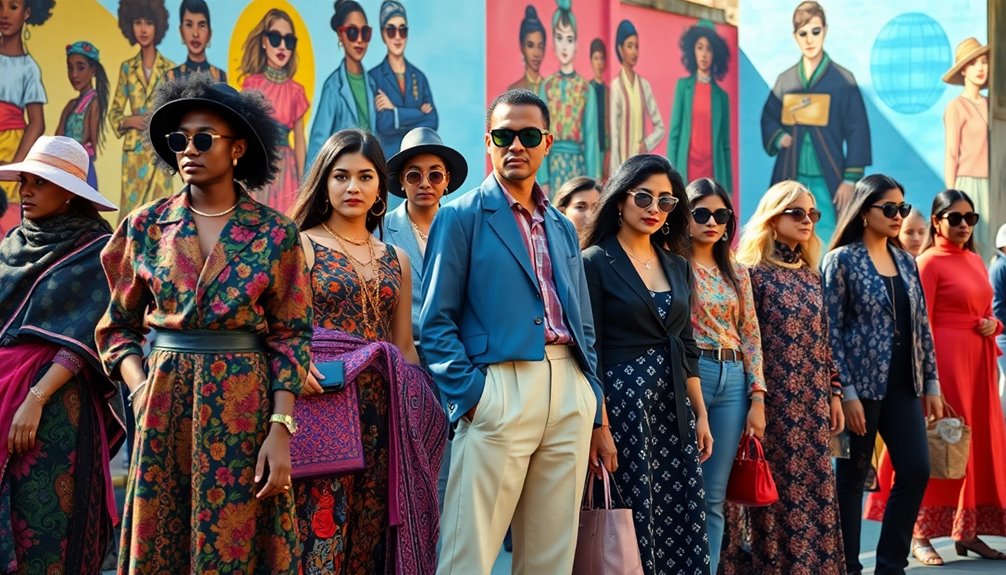
The conversation around cultural appropriation has highlighted the importance of understanding the complexities of fashion in a globalized world.
Globalization fosters cross-cultural exchange, allowing diverse styles to blend and shape fashion trends. With a huge impact from social media and gaming, fashion brands now reach 3.09 billion participants, rapidly spreading global trends.
You'll notice that fashion trends often emerge from the fusion of traditional and contemporary influences, showcasing a worldwide appreciation for cultural diversity.
International collaborations among designers further enrich cultural representation, enhancing your understanding of different aesthetics.
However, it's crucial to remain aware of cultural origins to avoid misrepresentation and appropriation as you navigate the complexities of today's fashion landscape.
Frequently Asked Questions
How Does Culture Influence Fashion?
Culture shapes fashion in profound ways.
You'll notice how traditional garments like the sari and kimono reflect unique identities and histories.
When you explore different regions, you'll see materials like silk and Ankara prints that showcase local craftsmanship.
Fashion becomes a canvas for cultural expression, allowing movements to assert pride through attire.
As cultures blend globally, you'll find contemporary styles enriched by diverse influences, but be mindful of the importance behind these cultural elements.
How Does Popular Culture Influence Fashion?
Imagine scrolling through Instagram and spotting a fashion influencer rocking a vibrant, oversized graphic tee.
That trend's likely a direct result of popular culture's impact on fashion. When celebrities like Beyoncé flaunt streetwear, you're inspired to incorporate similar styles into your wardrobe.
Social media amplifies these shifts, making it easy for you to adopt looks that resonate with music, film, or even gaming, shaping your fashion choices in real-time.
How Does Culture Influence Trends Around the World?
Culture shapes trends worldwide by blending traditional styles with contemporary fashion.
You'll notice how garments like the sari or kimono influence modern designs, creating a rich tapestry of global fashion.
Social movements, too, use clothing as a form of expression, making items like dashikis symbols of identity.
With globalization and social media, you can see these diverse styles showcased, allowing you to embrace a mix of heritage and modernity in your wardrobe.
How Does Fashion Affect Our Identity and Culture?
Fashion profoundly shapes your identity and culture.
It's a canvas where you express your beliefs, values, and heritage through your clothing choices. When you wear traditional garments, like a sari or kimono, you connect with your roots and foster community pride.
Your style can even become a statement of resistance or affirmation, especially during pivotal cultural moments.
Ultimately, what you wear reflects not just who you're but how you relate to the world around you.
Conclusion
In reality, culture weaves a rich tapestry within the fashion industry, influencing trends and styles in profound ways. As you explore the interplay between tradition, social movements, and globalization, you'll see how fashion isn't just about clothing; it's a mirror reflecting societal values and shifts. Ultimately, embracing diverse cultural influences not only enriches your wardrobe but also fosters a greater understanding of the world around you, reminding us that fashion is as much about identity as it is about aesthetics.
